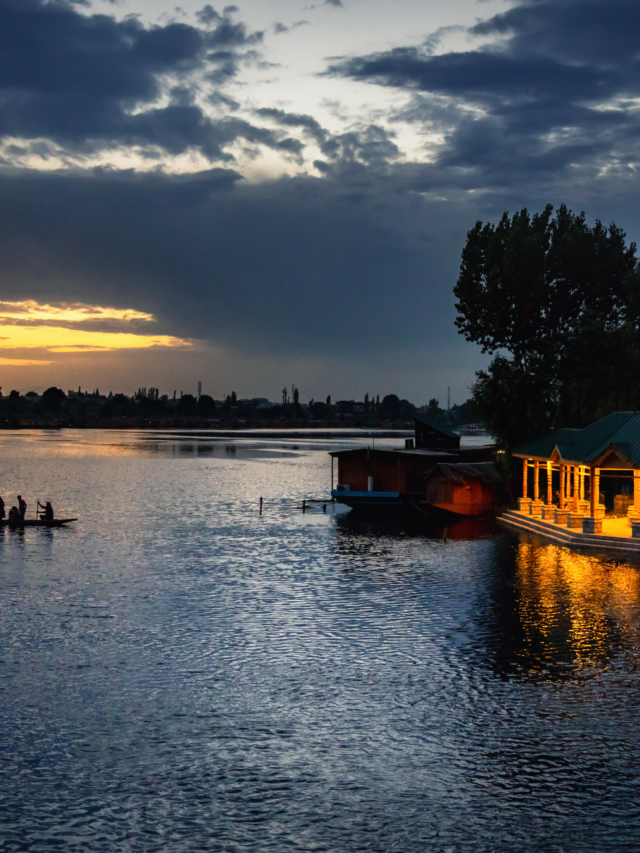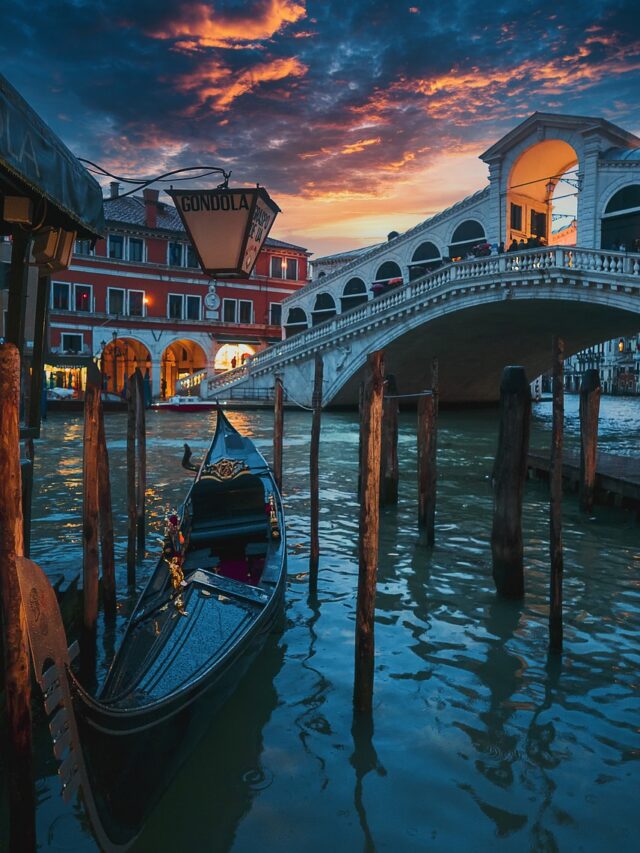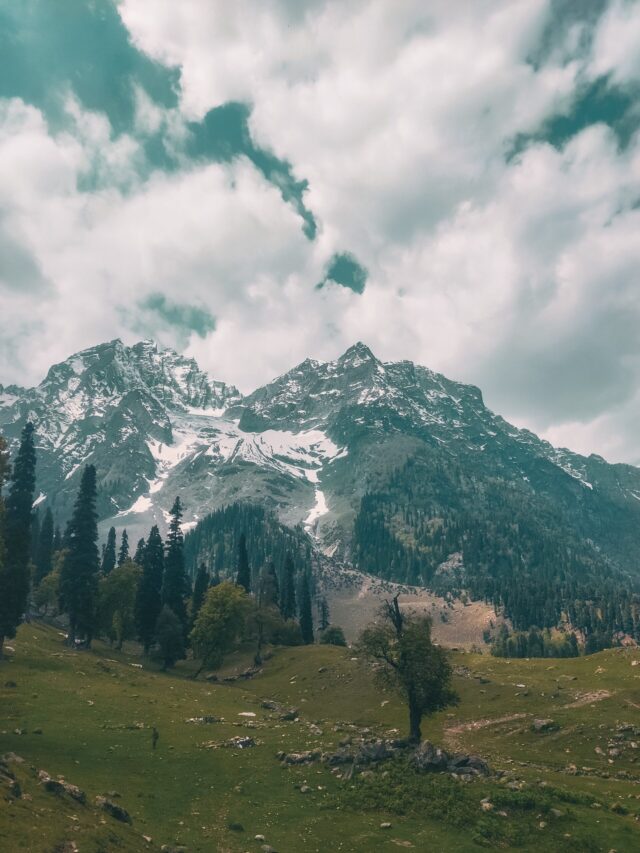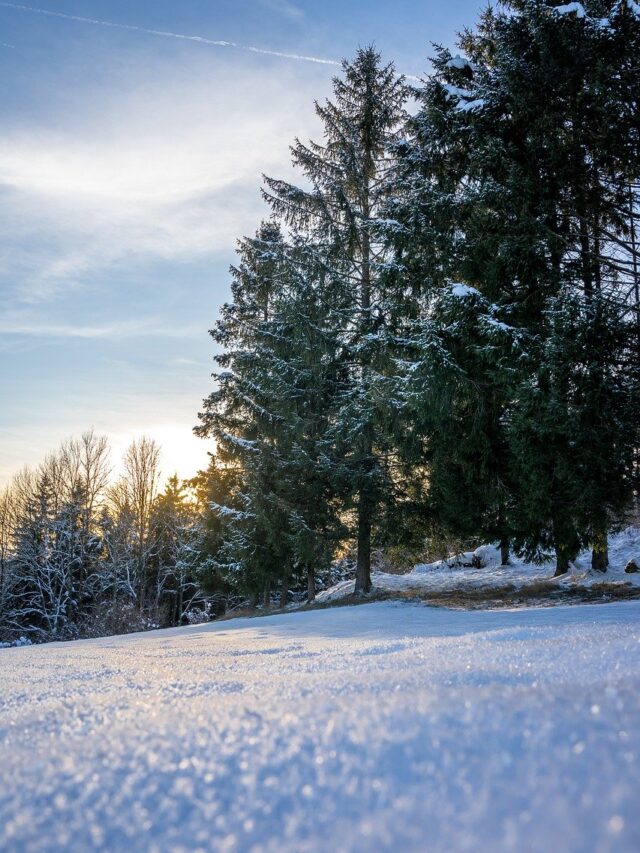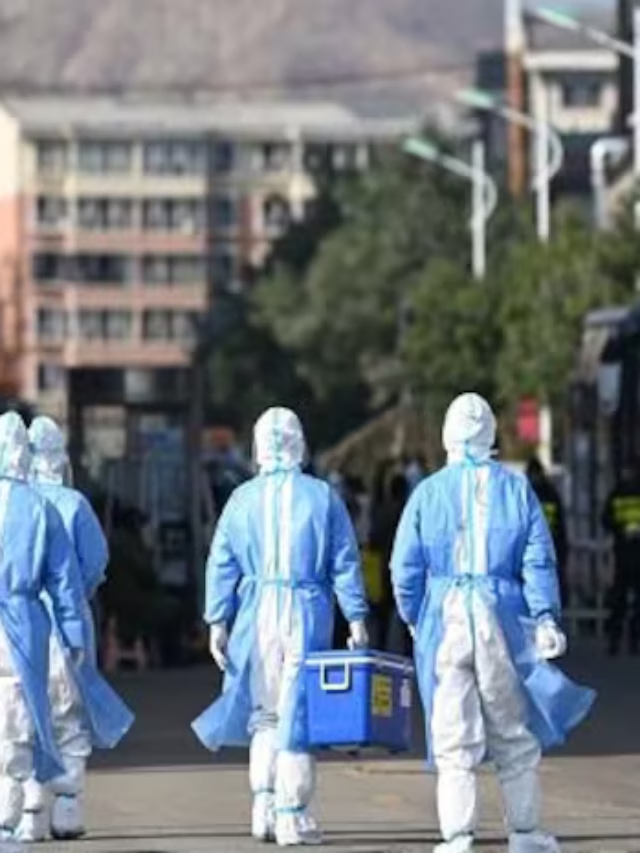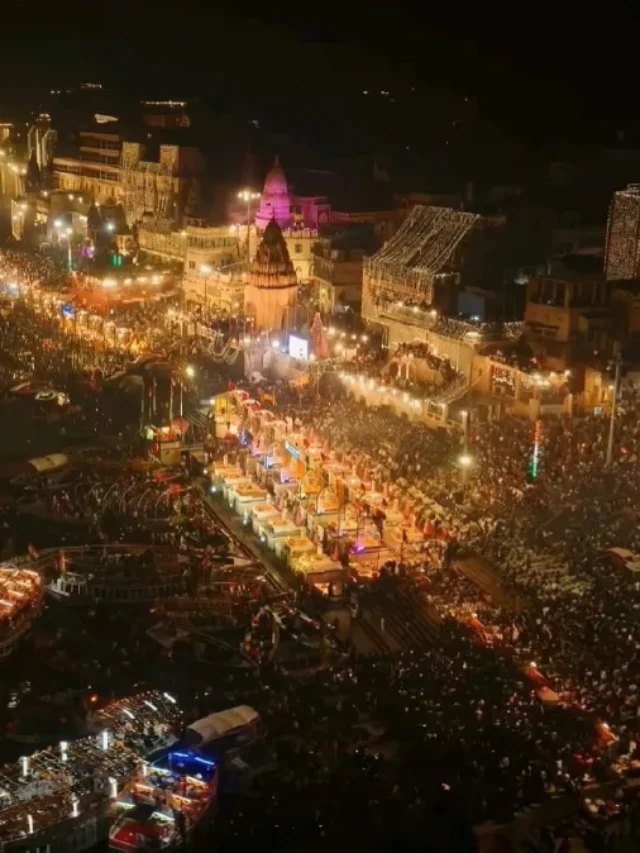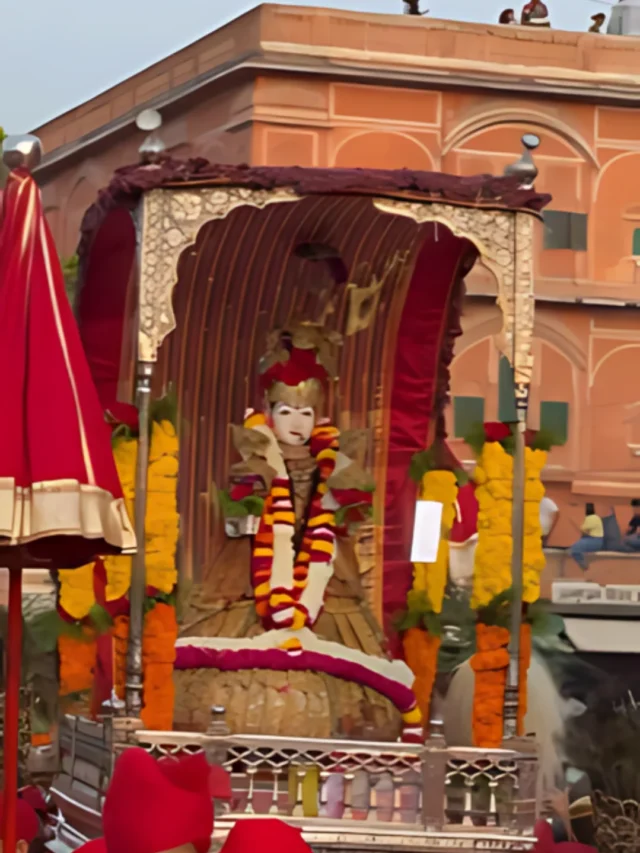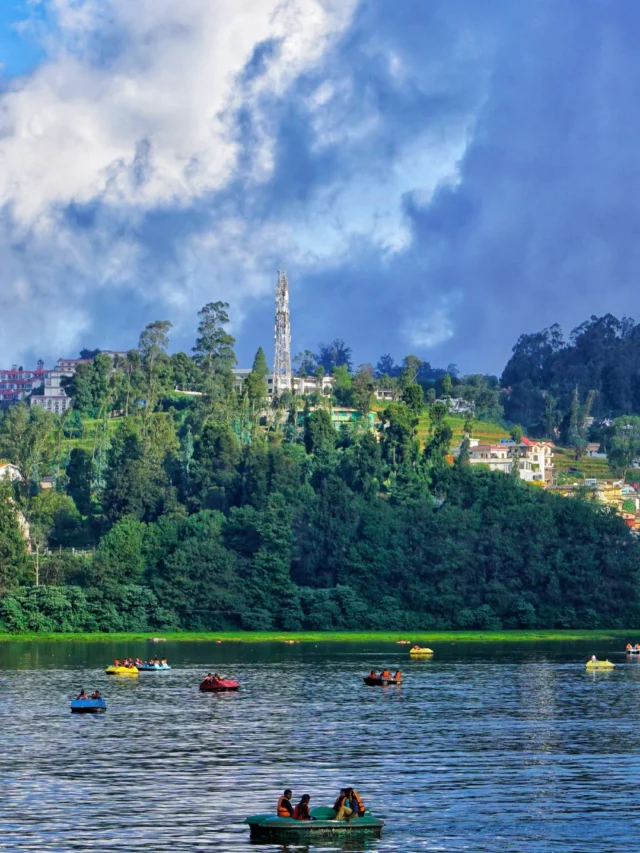If you’re looking for places to visit in Sikkim, you are at the right place. Sikkim, an area of India known for its natural beauty and cultural variety, is tucked away among the high Himalayan hills. Sikkim delivers a magical vacation experience that indelibly imprints on the hearts of those who come into its embrace with its beautiful scenery, rich cultural history, and friendly hospitality.
Top 20 Places to Visit in Sikkim:
1. Gurudongmar Lake:
A sacred lake at 17,000 feet above sea level, Gurudongmar Lake is a popular tourist place in Sikkim. The lake stays half-frozen and half-melted throughout the year and is considered one of the highest lakes in the world. Close to the Siachen Border, the path to the lake is covered in brown mountain soil until you reach the lake, where the view completely changes into snow-capped mountains. The story behind the mystery of the half-frozen lake is also interesting. It is said that when Guru Padmasambhava was traveling to Tibet with his disciples through this region, the disciples were thirsty, but the lake was completely frozen. To quench their thirst, the Guru, with his powers, enlarged his foot and broke half the lake’s ice that melted away – hence, the lake got the name “Gurudongmar”. It is an important spiritual lake of Sikkim, and the locals consider the water holy.
Things to Remember:
- The world’s highest café is situated on the way to Gurudongmar Lake at 15,000 feet. You can have a cup of coffee while on your way here.
- Bring a water bottle with you if you wish to drink the holy water.
- Due to the high altitude, there is a lack of oxygen, and it is advised not to stay for more than an hour.
- Children below 5 years of age are not allowed to visit.
- As it is situated close to the Indo-China Border, a special permit from the army is required to visit the lake.
2. Lake Tsomgo/Changu Lake
Changu Lake is a majestic water body that spans a whole kilometre. The glistening water changes colours every season, from blues to dark greens. As the snow melts away during the summers, beautiful flowers bloom around the lake, making it look like paradise.
The Sikkimese culture is strongly influenced by its natural setting. Every mountain, lake, and waterfall has a unique folktale linked with it, and Lake Tsomgo is not an exemption. Where the lake is now located was formerly the site of a yak stable, according to folklore. A yak herder had a dream one day in which she was advised to flee the area because it would soon be flooded. She followed the dream, but her fellow herders refused to accept her justification. Shortly after she left, the other herders who had remained in the valley were drowned by water as she observed an older woman with long, snow-white hair approach the area. She is now called the guardian deity of the lake that eventually became known as Tsomgo.
Things to Remember:
Yak rides offered here aren’t worth skipping.
3. Gangtok: Place to visit in Gangtok
It is the capital city of Sikkim and a famous place to visit in Sikkim. The town, located at a height of 1,650 meters above sea level, provides amazing views of Mt. Kanchenjunga on sunny days. Gangtok is a base for trekkers and campers visiting the Himalayan mountain ranges. Among the most prevalent treks originating from Gangtok are the Varsey/Barsey, Dzongri, and Tholung Treks. In and around Gangtok are many sightseeing locations like Tsomgo Lake and Nathu La Pass.
Gangtok offers a diverse nightlife. MG Road is dotted with hip eateries and bars open till midnight. The area is particularly great for shoppers since stores are open until late at night, giving visitors extra time to buy Tibetan handicrafts, clothing, and tea.
Things to Remember:
- MG Road, India’s first litter-free zone, imposes heavy fines on those who spit and litter the area.
- You can experience a bird’s eye view of the town through the ropeways/cable cars that operate here from 9.30 A.M. to 06.00 P.M. Ticket prices from INR 70 to INR 1000.
- Gangtok presents the International Flower Festival every May with a large selection of orchids, roses, and other flowers.
4. Yumthang Valley of Flowers
Yumthang Valley is one of those places to visit in Sikkim, where we would most like to return time and time. It is also called the Valley of Flowers and is a picturesque and peaceful location for nature lovers. The scenery and magnetism of the spot change with the seasons and are breathtaking throughout the year. Because of its location, one enjoys stunning views of the snow-capped mountains and the rivers meandering through the valley. And if you go during spring, the entire valley is covered in rhododendrons and beautiful flowers.
The Shingba Rhododendron Sanctuary, a natural reserve containing more than 21 species of Rhododendrons limited in India due to their climatic needs, is located near Yumthang. Despite being above the “treeline,” Yumthang has a lot of tree cover and one of the biggest floral species, including primulas, iris, poppies, geraniums, and many more types of flowers, depending upon the season. After the peak flowering period of rhododendrons begins to fade, various Himalayan flowering plant species take over.
Things to Remember:
Yumthang Chu is a river located on the way to the valley. Visits to this location are among the best things to do in Yumthang Valley, whether you want to unwind or take gorgeous photos.
5. Teesta River
The Teesta River is Sikkim’s lifeline and a fantastic location for adventure activities, including river rafting, river crossing, riverside camping, and more. The fierce rapids of this river are ideal for trying this adventure sport, but only the most skilled and resilient rafters can conquer them. The finest activities in Sikkim for thrill-seekers and adrenaline addicts include this one. A memorable experience emerges when you float down the Teesta River and travel through the gorgeous and alluring view of the deep woods along the mountainside, the chirping of various birds, the green, lush flora, and fish in the water.
Things to Remember:
- Bring a change of clothes for your rafting expedition.
- Rafting prices start from INR 1500 during tourist seasons.
6. Lachung
A picturesque hamlet, Lachung is one of the best places to visit in Sikkim for its environment and the hospitality of the locals. It is 120 kilometres away from Gangtok and has a perfectly aesthetic vibe. Nestled in snow-capped mountains are houses made of wood and dainty grass fields with grazing cows.
Lachung is a fascinating tourist place in Sikkim that has yet to be affected by modernisation. Those who enjoy spending time in nature should take advantage of it.
Things to Remember:
- Mobile networks are weak here.
- Mount Katao, situated in Lachung, is a splendid hill and one of the Himalayan range’s greatest sweeping summits.
7. Lachen
Lachen is a part of the Lachung-Lachen region and a hill-top hamlet like Lachung. With its wooden cottages, winding lanes, and picturesque views of the hills, the village exudes all the charm of a tiny hill town. Due to increased tourism, more concrete and brick homes have been built in the neighbourhood, but the ancient beauty still exists. The town’s gorgeous atmosphere is a visual treat for those who enjoy seeing old-world sights. A stroll through the town in the early morning or late at night is both a pleasant form of mild exercise and an unforgettable experience.
Things to Remember:
- Mobile networks are weak in the region.
- Lachen Monastery is a beautiful site to be visited.
8. Baba Harbhajan Singh Memorial Temple
Baba’s temple was built in memory of Harbhajan Singh – an Indian Army soldier posted at Nathula during the 1968 Indo-China War. He died by drowning in a glacier during the War.
According to folklore, he visited his colleagues in dreams a few days after going missing while on border patrol, gave them instructions on locating his remains and stated his wish to have a Samadhi constructed in his honour. Harbhajan Singh continued to warn the squad about impending attacks at least three days in advance, even after he passed away, by showing up in their dreams. During the flag meeting between India and China, even the Chinese showed him a unique respect and set aside a special chair.
Things to Remember:
Pilgrims offer bottles of water (available near the temple) to Baba Harbhajan Singh as respect. The bottles are subsequently retrieved by them after a few days, blessed by the soul of this brave soldier.
9. Zero Point
Zero Point is right on the Indo-China Border, and the road ends here. Also called Yume Samdong, it is the perfect tourist place in Sikkim. Zero Point Sikkim is one of the greatest places to visit in Sikkim due to the stunning convergence of three rivers, the surrounding snow-capped mountains, and the breathtaking scenery. Zero Point is a top tourist destination despite the dangerous roads. It’s enjoyable to see the yaks grazing in the snow. Snow continues to blanket it for most of the year. So, if you want to witness and enjoy the snow, head over to Zero Point, where you’ll undoubtedly have a pleasant experience.
Things to Remember:
- It is situated at a high altitude of 15,300 feet. Pack your stuff accordingly, and do not stay long here. Take precautions and your required medications as well.
- The signature scent of Sikkim, Azellia, can be found outside every residence along the path to Zero Point. Snowfall almost occurs all year long. You may take in the transition in nature from the flower valley’s kaleidoscope of hues to the snowy white layers at Zero Point.
10. Seven Sisters Waterfall
The Seven Sisters Waterfalls comprises seven unique waterfalls conveniently placed next to one another on a wide, rugged cliff easily identifiable from a distance. This magnificent waterfall is located 32 kilometres from Gangtok on the Gangtok-Lachung Highway. It comes to life after rain and offers a captivating view. The gurgling water produces a roaring sound as it tumbles through the thick vegetation and down the limestone cliffs. Tourists often spend a long time taking pictures when they see the sun sinking.
The interesting Seven Sisters waterfall is named so because it flows in seven stages, only four visible to tourists. It is hard to see the remainder of it because of the extent to which it drops and the way the rocks block your view.
Things to Remember:
A separate footbridge was created for photography enthusiasts to climb over for a better view of the falls.
11. Nathula Pass

The Nathula Pass, which lies 54 kilometres east of Gangtok, is well known for its incredible natural beauty and rich historical background. The Pass, which links Sikkim with the Tibetan Autonomous Region, is a branch of the Old Silk Route. The Nathula Pass retains its significance as the junction where China and India meet. It goes via Tsomgo Lake and was formerly a crucial commercial route connecting Tibet and India. The Nathula Pass is nothing less than heaven with its stunning alpine plants. You will be in awe of its stunning landscape, pristine wildlife, and charming people.
Every year, a large number of people come here to go hiking in the valley and take in the natural splendour. A lot of waterfalls burst along the route from Gangtok to Nathu La. It also provides a chance to view the stunning snow-capped mountains surrounding the region. Moreover, Tibetan wolves, snow leopards, and Tibetan gazelles can be found in the area.
Only SUVs are permitted to travel to Nathula Pass. In Gangtok, strong cars like the Innova, Bolero, and Scorpio are rented out. You may also share a taxi with other travellers up to Nathula Pass.
Things to Remember:
- Nathu La Pass is only open to tourists from Wednesday to Sunday as it’s a protected site.
- The world’s highest ATM is at Thegu – a hut whose road-facing façade is painted with two similar dragons. It is located on the way to Nathu La.
12. Ranka Monastery
Despite being a relatively recent addition to Sikkim’s extensive collection of Buddhist monasteries, Ranka or Lingdum Monastery unquestionably wins the award for being the most gorgeous. Zurmang Gharwang Rinpoche, the 12th incarnation of Zurmang Gharwang of the Kagyu Sect of Tibetan Buddhism, established the monastery.
Due to the gorgeous mountains on its boundaries, the Ranka Monastery in Gangtok is one of the topmost places to visit in Sikkim. Several exquisitely crafted prayer wheels will welcome you as you arrive. There is a sizable courtyard with the complex’s gorgeous main temple. A five-meter-tall golden statue of Buddha and a smaller statue of Guru Padmasambhava are inside the main prayer hall. A unique collection of Buddhist manuscripts is also kept there. Intricate thangka paintings and colourful hand-stitched wall hangings adorn the walls.
A two-story structure nearby has classrooms for the young lamas to study in. Monks dressed in stunning crimson and saffron robes flood the courtyard during breaks. Visitors are also welcome to take photographs with the monks. On the property are a café and a gift shop for leisure.
Ranka Monastery’s beauty has drawn several filmmakers to this location, and it has appeared in many Bollywood films filmed here.
Things to Remember:
You can interact with monks here and gain wisdom.
13. Temi Tea Garden
One of the most attractive tea gardens in North-Eastern India is Temi Tea Garden, tuckedaway near Ravangla. It is regarded as the greatest tea plantation in the world since the tea is produced only with organic fertilisers and is of the highest quality, attracting numerous tourists all year. To do so, the sole tea garden in Sikkim, Temi Tea Estate, produces roughly 1 Lakh kilograms of tea annually. The walkway leading to this tea field is lined with stunning cherry blossom trees, and going on the road towards the fields provides a lovely experience. Once inside the garden, visitors are rewarded with breathtaking views of Khangchendzonga covered in snow, which mesmerises them and leaves them speechless. Staying in the cottage here is a unique experience in and of itself, in addition to visiting the garden. Sikkim’s Temi Tea Garden is on top of the list of best places to visit in Sikkim to relax and have fun with your loved ones.
Things to Remember:
- Buy some of the best tea leaves here at the best tea plantation in Sikkim.
- Sip a cup of tea while you take in the spellbinding views of the gardens and cherry trees.
14. Chaar Dhaam
Chaar Dhaam is one of the well-known places to visit in Sikkim, located in Namchi. It is also known as Siddheshwar Dham and stands at a height of 5,500 feet above sea level. It has an area of more than 7 acres, and its complex houses many other holy buildings, including Sai Baba Temple and Kirateshwar Statue. Shiva devotees and others visit the location to worship the 33-meter-tall Shiva statue erected on the Solophok peak. This area also houses the 18-foot-tall statue of Kirateshwar, a hunting manifestation of Shiva. According to Hindu legend, Lord Shiva is thought to have gone into solitude and taken up hunting in the forests of Sikkim after losing Sati in Agnikund. Replicas of the 12 Jyotirlingas, like Somnath, Badrinath, Rameshwaram, Mahakaleshwar and Omkareshwar, can also be found here
Things to Remember:
Be respectful of the culture here and not violate any rules.
15. Nathang Valley

Traditional Tibetan yak herders lived in this fertile valley at a height of 13,500 feet. Only a few streams go through the valley; on this vast plain, prayer flags wave over the mountainsides. Nathang Valley appears throughout the year in a variety of colours. When the grass disappears under snow, it looks stunning; during the stormy season, it is engulfed in blossoms. Around here, chilling wind waves are blowing. It is on One of the Old Silk Road towns that linked China and India. One of the most isolated Tibetan communities in the Eastern Himalayas is Nathang town.
Nathang Valley, also known as Gnathang Valley, situated at a height of 12,700 feet above sea level, is home to a Hindu temple and a small Buddhist monastery on the outskirts of a town and has a rich history. The Battle of Nathang qualifies as a crucial event in the British occupation of Tibet. You may currently visit the memorial park for the British soldiers who lost their lives in this battle here.
Nathang is referred to as the “Ladakh of East Sikkim”.
Things to Remember:
- Eagle’s Nest Bunker is a well-known vantage from which you can see Mt. Kanchenjungha in its entirety, West Bhutan, the plains of Bengal, China, Tibet, and the lovely River Brahmaputra snaking across the horizon.
- Zuluk is well known for its outstanding circles. This crossing pattern has about 30 circles. Zuluk’s sunrise point is called Ganek. Start early to go to Ganek and see the sunrise over Mount Kanchenjungha.
16. Goecha-La Pass and Trek
Goecha-La trek is difficult, and many hikers travel to Sikkim to partake in this adrenaline-pumping adventure. The route on this unmatched walk appears captivating and is full of rewards if you can make it to the end. You will be astounded by the breathtaking view of Mt. Kanchenjunga when you reach an elevation of 4940 feet towards the end of the 10-day trek. Some major attractions you’ll encounter during the trek are Yuksom, Dzongri View Point, Lamune Campsite, Samiti Lake, and Thangshing Campsite.
The sunrise on the Kanchenjunga range is one of the most impressive features of the Goechala hike. Even though trekkers cannot access the actual Goecha Pass, the vista from Dzongri is quite stunning. Rhododendrons blossom all along the route to Goechala. You can see them emerge with pink and red blooms during the spring and summer. Walking through these forests’ pathways is quite enjoyable.
Things to Remember:
Wear comfortable trekking attire and sturdy shoes. Always carry a water bottle with you.
17. Khecheopalri Lake
Also called Sho Dzo Sho (“Oh lady, sit here”), Khecheopalri is a sacred lake with mysteries about 147 kilometres from Gangtok. The peaceful Khecheopalri Lake is likely the most beautiful of all the significant religious sites in Sikkim. When you arrive at the lakeside, you can’t help but experience a profound sense of tranquillity. The calm singing of the people’s prayers or the sight of the Buddhist monks gently feeding the fish while reciting prayers soothes you. Most visitors to the location worship at the lake. The lake is an important place for Buddhists and Hindus alike. Locals believe the lake grants wishes when one drinks from it and splashes some water on themselves.
When you arrive at the location, the lake is not immediately apparent. A brief yet lovely stroll may be taken while enjoying the shade of the trees and floating prayer flags. You are greeted by a large rock bearing the inscription “Om Mani Padme Hum”. You can reach the lake’s shore through a jetty with prayer wheels along the route.
Interestingly, a frequently held belief regarding Khecheopalri Lake is that there cannot be any leaves floating in the lake. Birds take charge of collecting any stray leaves that may fall into the lake. Some claim that the lake looks like a footprint when seen from above. Some people think the footprint belongs to the goddess Tara Jetsun Dolma, while Hindus think it belongs to Lord Shiva, and Buddhists think it belongs to Lord Buddha. Dupukney Cave is located just above the lake. Every Nag Panchami, people gather at this lake to worship and pay their respects since, according to Hindu belief, Lord Shiva meditated here.
Things to Remember:
- You can sit by the lake and feed the fish.
- If you believe in the legends, you can also drink from the lake for healing yourself.
18. Ravangla Buddha Park
On the 2550th anniversary of Buddha’s birth, Ravangla’s Buddha Park was formally inaugurated. The enormous Buddha Park, additionally referred to as Tathagata Tsal, in Ravangla, is picturesque and features a massive statue of Gautama Buddha.
The park provides some stunning vistas of the Greater Himalayan range while surrounded by the beautiful Himalayas. The picturesque water fountain in front of the statue and the meandering walkways among meticulously tended lawns make it the ideal location for some pictures.
The statue of the Buddha further enhances the serene atmosphere of the natural environs in the bhumisparsha mudra with his eyes partially closed. The statue is visible from every angle throughout southwestern Sikkim and in certain areas of neighbouring West Sikkim.
On top of that, the park has a museum that tells the tale of Buddha’s life and a meditation centre that is accessible to both visitors and monks. A little curio shop nearby offers gifts such as prayer beads and souvenirs.
Things to Remember:
Buy souvenirs from the shops as a memory of your trip to this peaceful abode of the golden Buddha.
19. North Lha-Ri-Nying Phu Cave
Sikkim is home to the “Phug Chen Zhi,” or “Four Great Holy Caves,” which are a part of Sikkim’s “gNas-Chen-InGa” (Five Sacred Places). These caves are situated in Tashiding’s all four directions – in the east is (Sharchog Beyphug), in the south is (Lho Kando Sangphug), in the west is (Nub Dechenphug), Jhang Lhari Nyingphug is in the north (J). According to sacred texts, Tashiding is the navel point of “Bayul Demajong” and the fifth sacred place of this pilgrimage.
These Caves were established as the homes of several Protective Divinities in Esoteric Buddhism by Guru Padmasambhava. They are now the most popular pilgrimage site for Bhutanese worshippers and Sikkimese and Darjeeling Buddhists. A journey to these caverns is made by passionate Buddhist devotees, particularly those from Sikkim, at least once in their lives.
The Lha-Ri-Nying-Phu is regarded as one of the most sacred caves in Sikkim, and in August, when the rocks are damp from the outside, you feel enthralling and cool inside the cave. The caverns offer a fantastic opportunity to view the Himalayan interior as well. You have to begin your journey from Tashiding to the cave, and it will take three days to get there. On your trip to the cave, you could experience the excitement of this exciting trek while also seeking the blessings of the divine.
Things to Remember:
These are the sacred caves of Buddhists. Do not litter here or disrespect their deities.
20. Reshi Hot Water Spring
A delightful moment spent unwinding in a natural hot spring – the bubbling water releasing all of your body’s tension and lulling you into a relaxed state. The Reshi Hot Spring is the most renowned of the several historic winter soaks in and around Pelling. The Reshi Spring is one of the most popular tourist destinations in the region, and visitors from all over the world prioritise including it in their travel plans.
Amid Sikkim’s majestic mountains, on the shores of the River Rangeet, lie the Reshi Hot Springs. Due to their proximity to a monastery and the revered Lho Khandro Sang Phug – the cave of occult fairies, the waters themselves are said to be holy. Due to its high sulphuric content, the spring has healing properties.
Things to Remember:
- It is a sacred hot spring. Do not litter here.
- Make sure to get a change of clothes.
Best Time to Visit Sikkim:
The ideal months to visit Sikkim are March through May or mid-October through mid-December. The greatest time to visit Gangtok, if you wish to see its blossoming natural beauty, is in the spring, between March and May. Conversely, autumn offers a clear glimpse of the Himalayan Mountains. The best time to visit Sikkim is from October to December to get a good shot of the Himalayan Range. You may participate in several events during this period when you can, among other things, stay in a local home.
Important Note:
Sikkim has several restricted areas requiring entry permits because of its proximity to international boundaries. They are called Protected Areas Permits (PAP). Some of these areas are only allowed to be accessed by Indian nationals.
Conclusion
Sikkim, a wonderland encircled by the Himalayas, is a natural beauty. A canvas of verdant valleys, gushing waterfalls, and snow-capped peaks that reach the skies is what Sikkim is. Awe-inspiring reminders of the magnificence of nature are provided by the towering Kanchenjunga, which is capped with perpetual snow. There are many places to visit in Sikkim, and you will travel through lush woodlands and come across tranquil monasteries that appear to reach the heavens as you discover their hidden riches. Each dawn and sunset here creates a show of colours that dance on the mountains.



